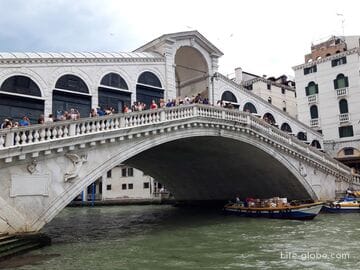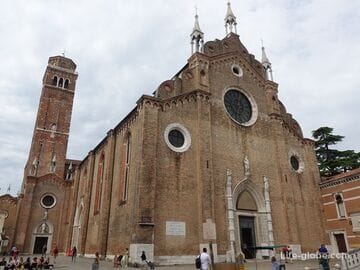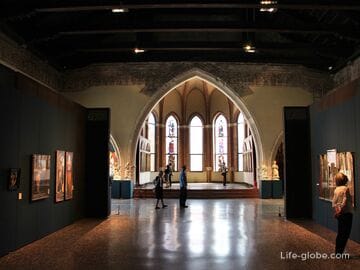San Marco Square or St. Mark's Square (Piazza San Marco, Venetian name: Piasa San Marco) is the main public square of Venice, which attracts many tourists, and is also one of the most important monumental squares in Italy, known worldwide for its beauty and architectural integrity.
It may be known as St. Mark's Square.
The square got its name "San Marco" in honor of St. Mark the Evangelist, the patron saint of the city.
Throughout history, the square has been the political and religious center of the Republic of Venice.
Today, St. Mark's Square incorporates different architectural styles. Around the square, there are such significant sights of Venice as St. Mark's Cathedral, the bell tower of the cathedral, the Doge's Palace, the Clock Tower, the Marcian Library, the monumental columns of San Marco and San Teodoro and the large wings of the former Prosecutor's Office.
In the buildings around the square there are: museums, observation decks, shops, tourist information center, as well as cafes and restaurants. Numerous accommodation facilities (hotels, apartments) are located near the square
The ensemble of St. Mark's Square forms the main and unsurpassed architectural object of Venice, which is widely known throughout the world.
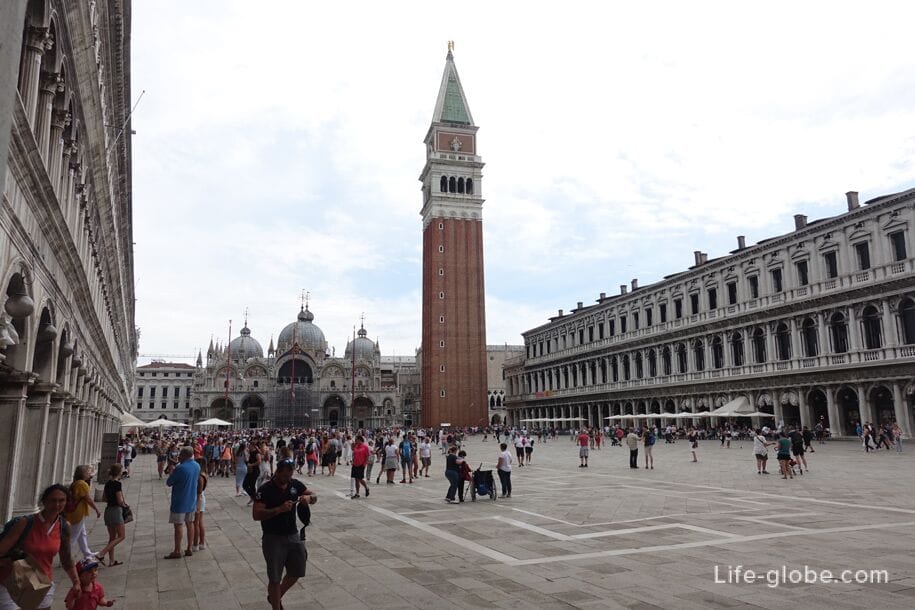
The history of the square dates back to the 9th century, when it was formed as a small space in front of St. Mark's Cathedral. Subsequently, the square grew, and its perimeter was built up with new architectural masterpieces.
Thus, the square gradually acquired its current size and shape, which has the form of two adjacent squares: a large square near the Cathedral of San Marco and a smaller one called Piazzetta San Marco (Piazzetta San Marco, "small square") - a branch in front of the Doge's palace and the Marcian Library.
It was on St. Mark's Square that the main city festivities, including the Carnival of Venice, traditionally took place.
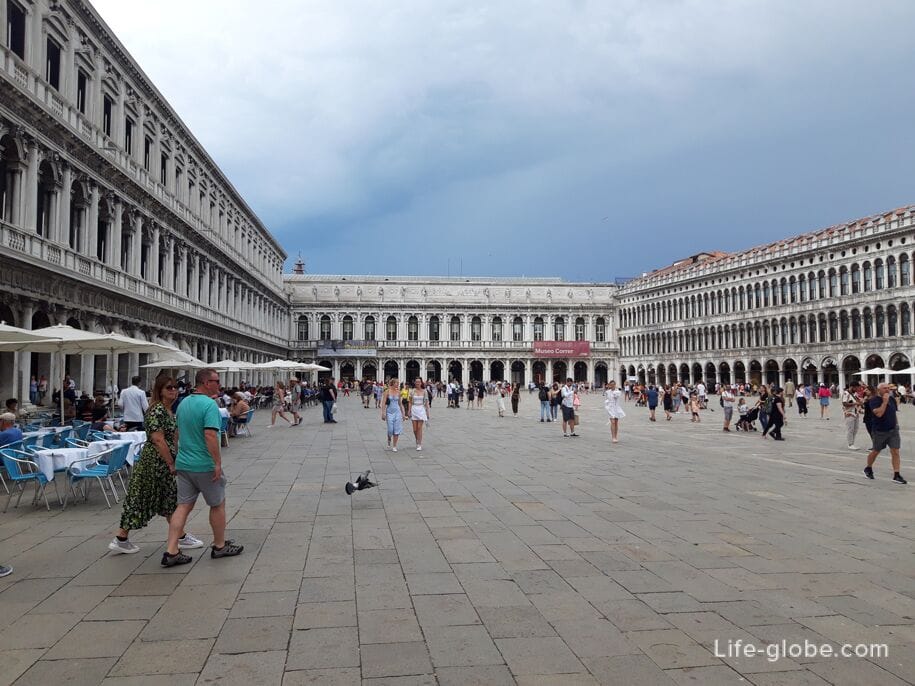
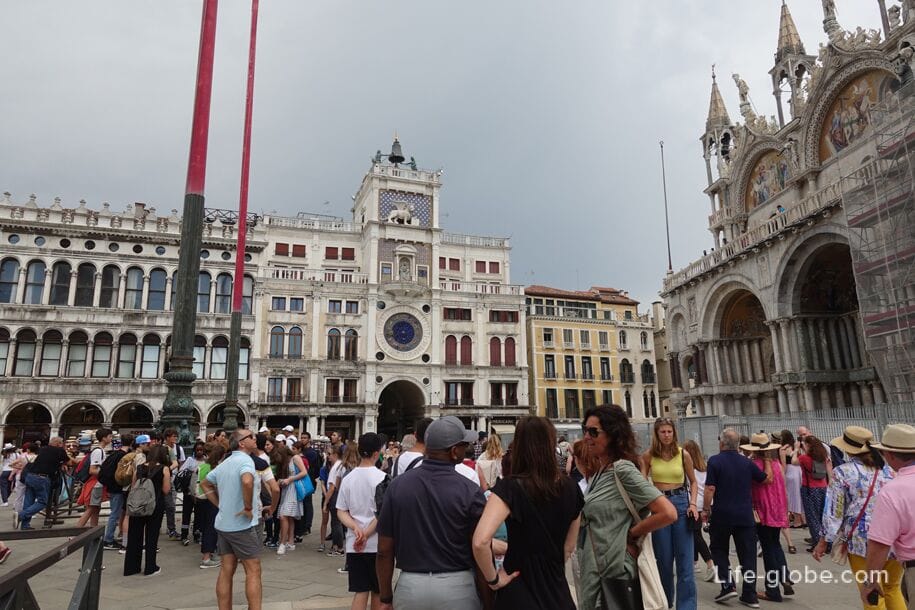
Photo of Piazzetta San Marco
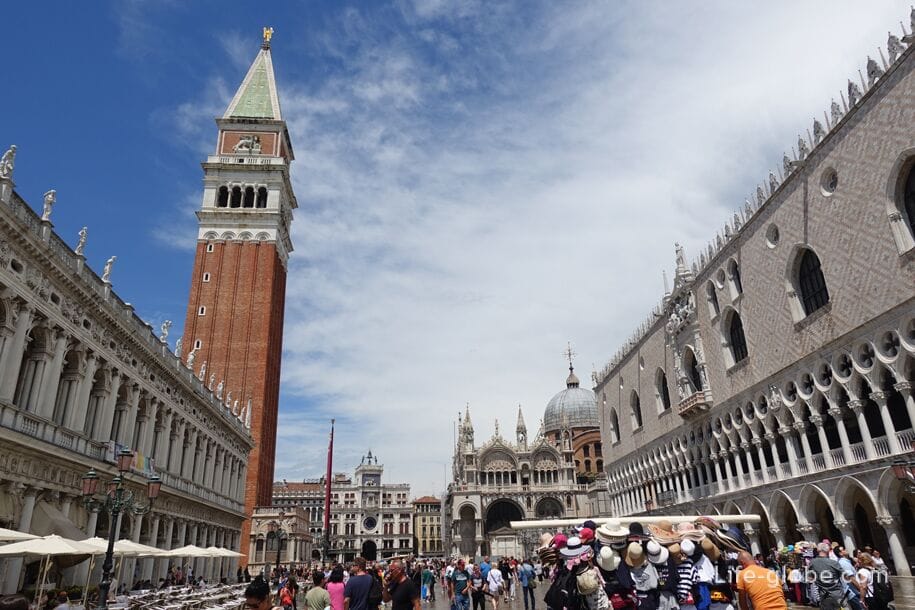
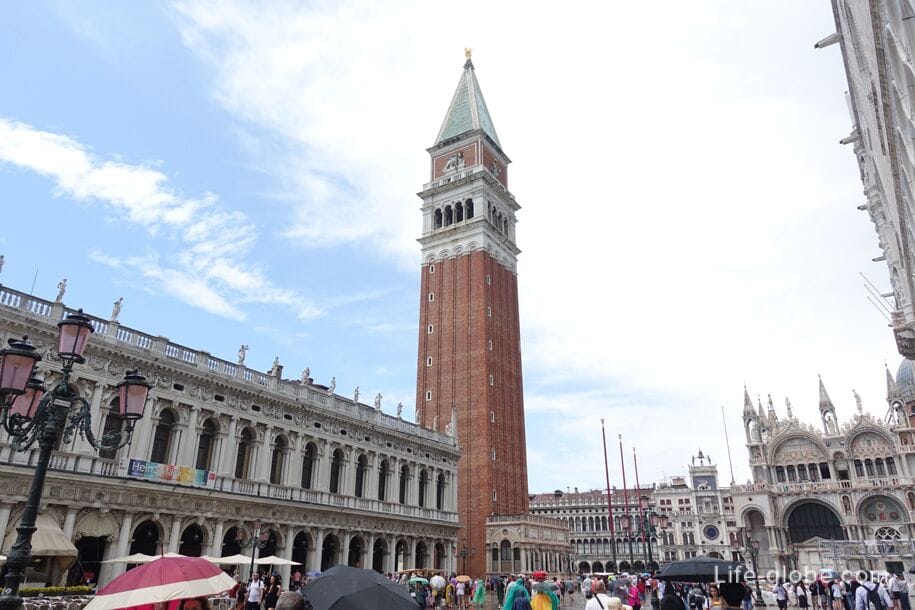
Sights and museums of St. Mark's Square
St. Mark's Cathedral
St. Mark's Cathedral or Basilica of San Marco (Basilica di San Marco, in Venetian: Baxełega de San Marco) is the main church of Venice, which is the city cathedral and the most famous symbol of Venice.
The history of the church began in 828 (829), when the body of St. Mark was transported from Alexandria, Egypt. The modern cathedral was started in 1063.
Today, the exquisite marble facade of the church with domes, mosaics, sculptural and relief decorations makes an unsurpassed impression.
The relics of St. Mark the Evangelist, the patron saint of the city, are kept in the Cathedral of San Marco. The cathedral is also an image of Venetian-Byzantine architecture and attracts attention with mosaics on a golden background, sculptures, a valuable altar and a museum with an outdoor terrace where you can go out and admire the views of St. Mark's Square.
A visit to St. Mark's Cathedral is paid. A visit to the altar space of the cathedral - with an additional fee. A visit to the cathedral museum with access to the terrace - with an additional fee. Children under 6 years old - free of charge.
St. Mark's Cathedral website: basilicasanmarco.it . Learn more about St. Mark's Cathedral and visiting the cathedral...
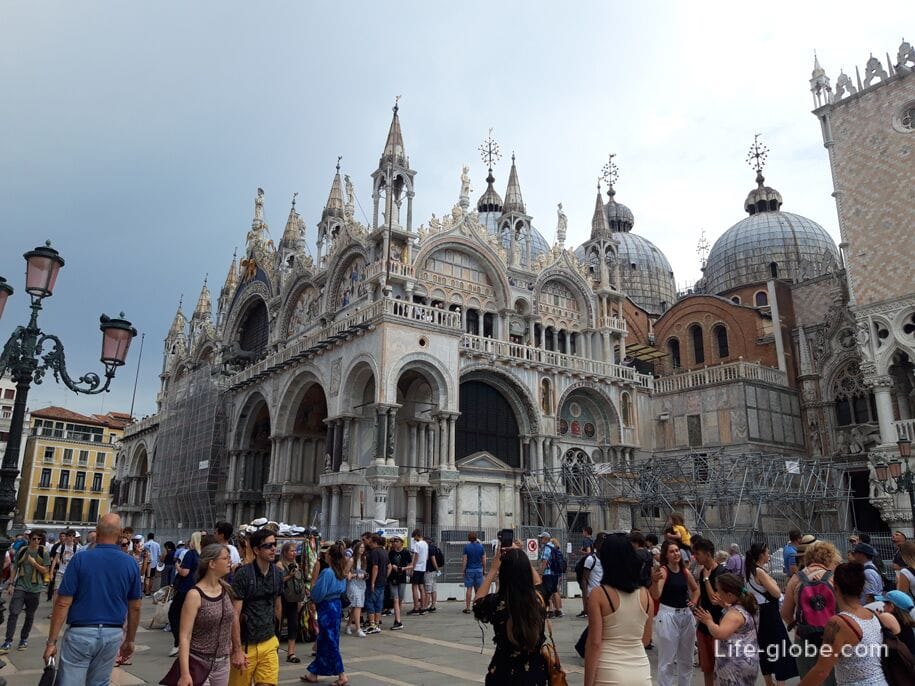
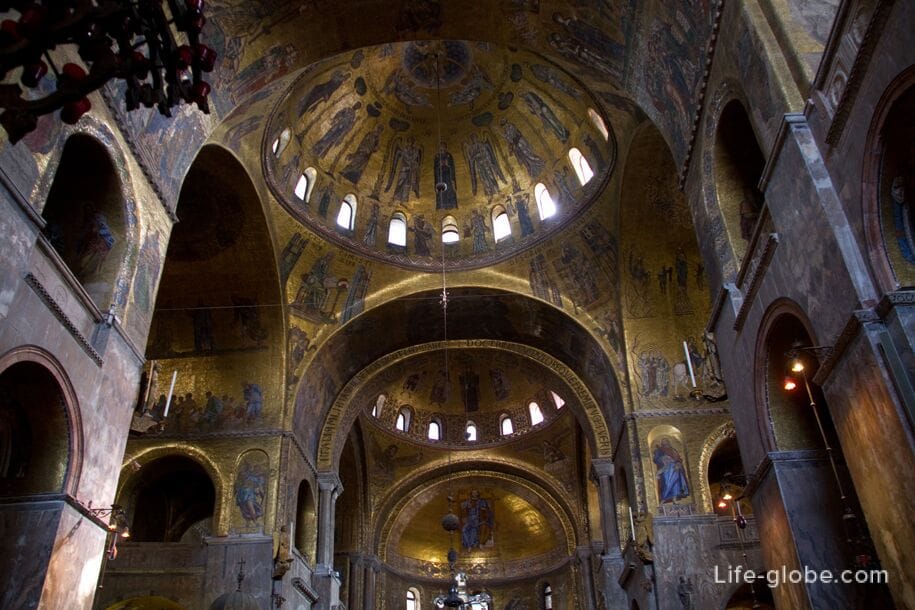
Flagpoles
In front of the main facade of the cathedral, in San Marco Square, there are three tall flagpoles mounted on architectural bronze pedestals decorated with high reliefs by the Venetian sculptor Alessandro Leopardi in 1505.
They say the flagpoles are the original masts of the ship. They were originally established as a symbol of Venice's conquest of three kingdoms: Cyprus, Crete and the Peloponnese. However, in the time of Napoleon, they were considered a symbol of tyranny and were practically destroyed. After that, for salvation, it was stated that they represent Freedom, Virtue and Equality, and now on holidays and significant days the flags of Venice, Italy and the European Union fly on them.
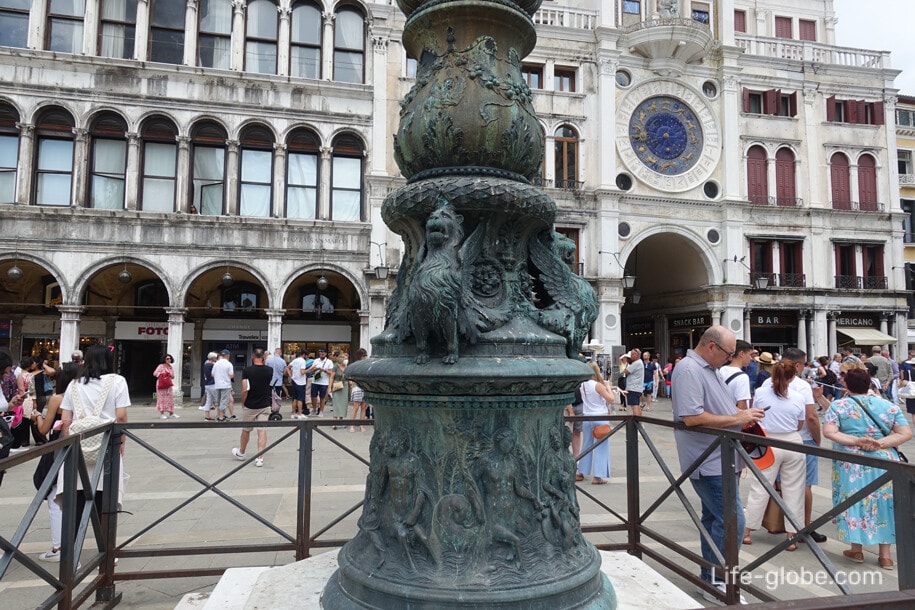
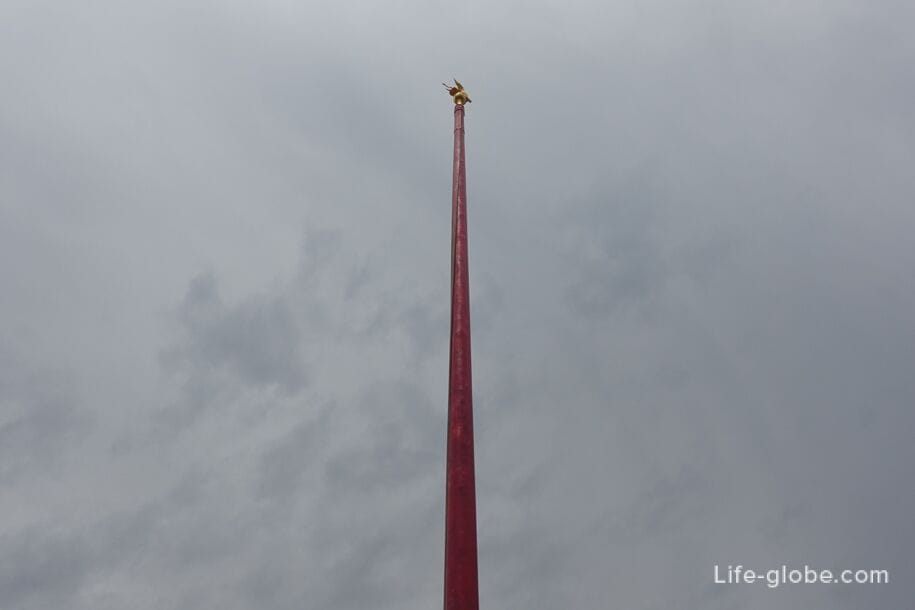
The bell tower of the cathedral with a loggia and an observation deck
Not far from the main facade of the Cathedral of San Marco there is a high detached bell tower of the cathedral - the bell tower of St. Mark's Cathedral (Campanile of St. Mark's Cathedral, Campanile di San Marco).
The Campanile is the tallest building in the historical part of Venice; it has architectural decorations and, in the upper part, a public 360-degree observation deck, which offers breathtaking views of the historic island of Venice and the lagoon from a bird's-eye view.
A visit to the observation room in the bell tower is paid.
At the base of the bell tower adjoins a small loggia called Loggetta Sansovino (Loggetta Sansovino a Venezia), which was built between 1537 and 1549 by the architect Jacopo Sansovino (hence the name). This is a monument of Renaissance architecture, which is decorated with sculptures and it was originally used to meet nobles, communicate with important dignitaries and officials. Learn more about the Campanile of San Marco, the observation deck and the loggia...
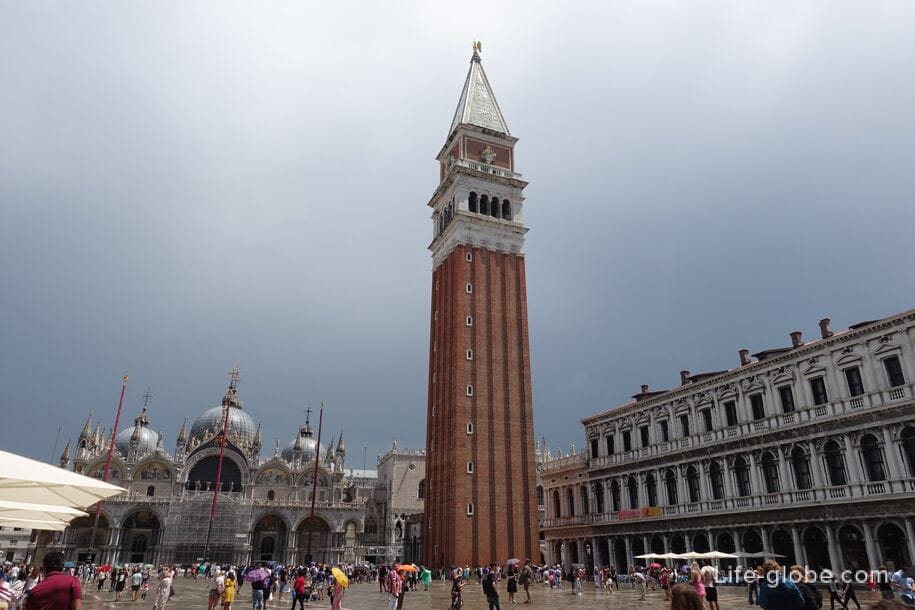
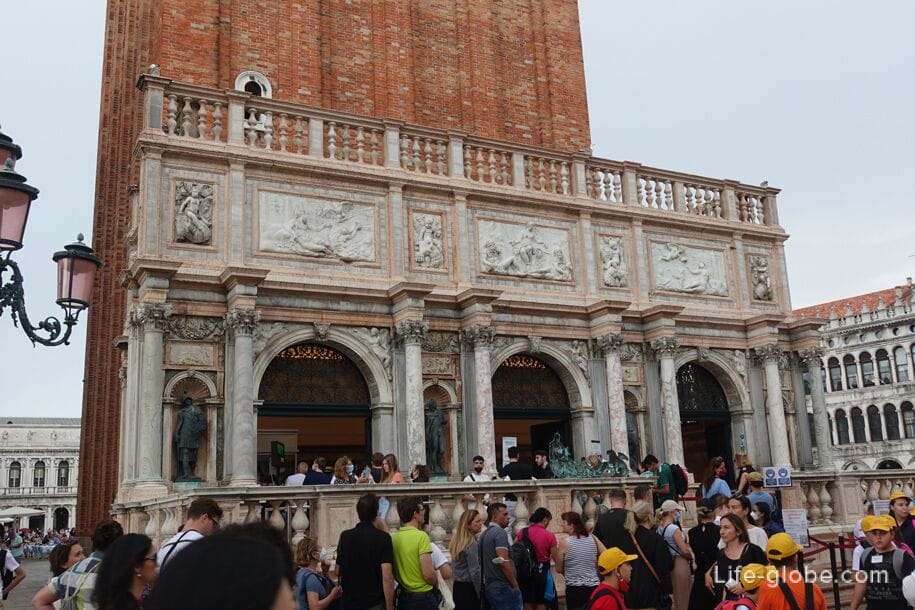

Clock Tower
In the north-eastern part of the square of San Marco attracts the attention of the Clock Tower of St. Mark (Clock Tower of San Marco) or Torre dell’Orologio (Torre dell'orologio) is a Renaissance building, which is famous for its large clock, sculptural decorations and a bell on the roof.
The tower was built between June 1496 and 1499 to house clocks equipped with automation and complex mechanisms, and to reflect the interest of the Venetian state in mechanical sciences and to show a society that keeps up with the times.
Guided tours are conducted around the tower, during which you can see the clockwork from the inside, as well as go out on the roof and admire the views of the very heart of Venice.
The site of the Clock Tower Museum: torreorologio.visitmuve.it. Learn more about the clock tower, the clock and visiting the tower...
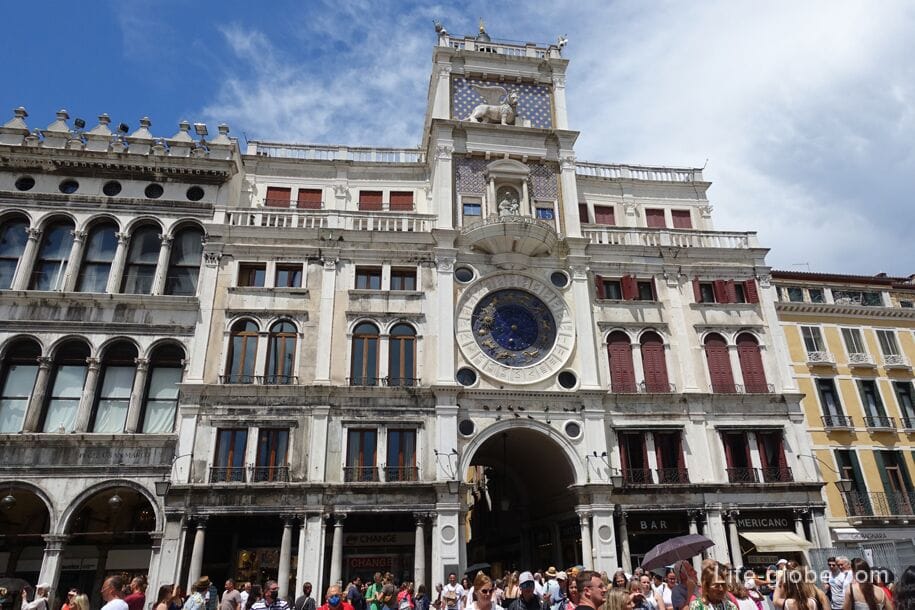
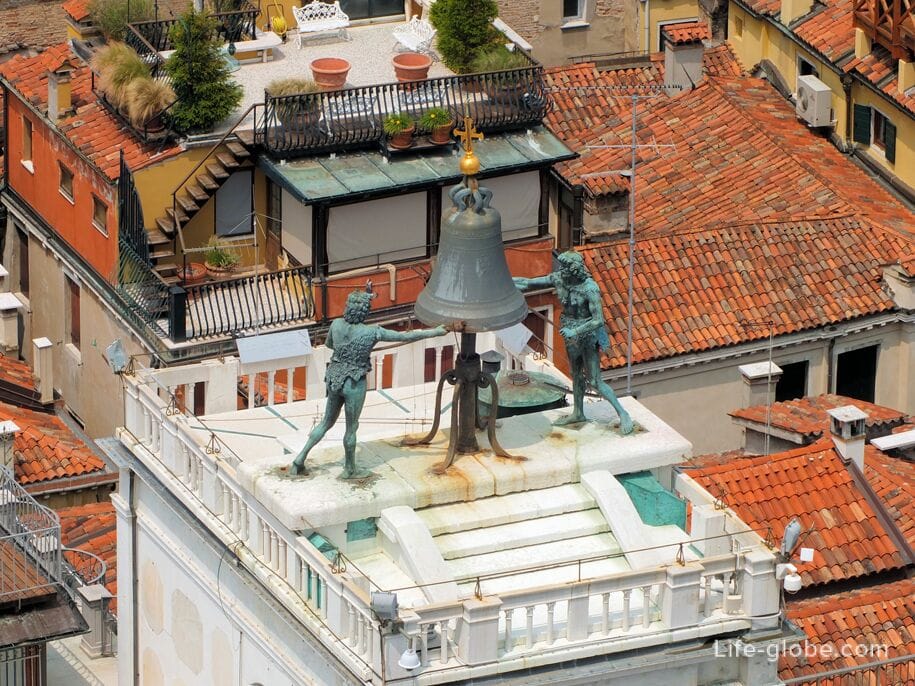
Piazzetta dei Leoncini
From the Clock Tower to the right (to the east), at the north side of St. Mark's Cathedral, there is a small square, which is perceived as a single whole and a continuation of St. Mark's Square - this is the Piazza Leoncini (Piazzetta dei Leoncini, Piazzetta dei Leoncini).
Notable on the square are lion sculptures made of red Cottanello marble (from the city of the same name in the province of Rieti) by the Italian sculptor Giovanni Bonazza in 1722; and in the niche of St. Mark's Cathedral itself is the sarcophagus of Daniele Manin, president of the short-lived independent Republic of San Marco, created during the 1848 uprising against the rule of the Habsburgs.
In the center of the square there is a well - the only public well in the entire complex of the Marciana district.
There are also: the Patriarchal Palace (Palazzo Patriarcale), which is the seat of the diocesan curia of the Patriarchate of Venice; and the small church of San Basso (Chiesa di San Basso), where exhibitions are held.
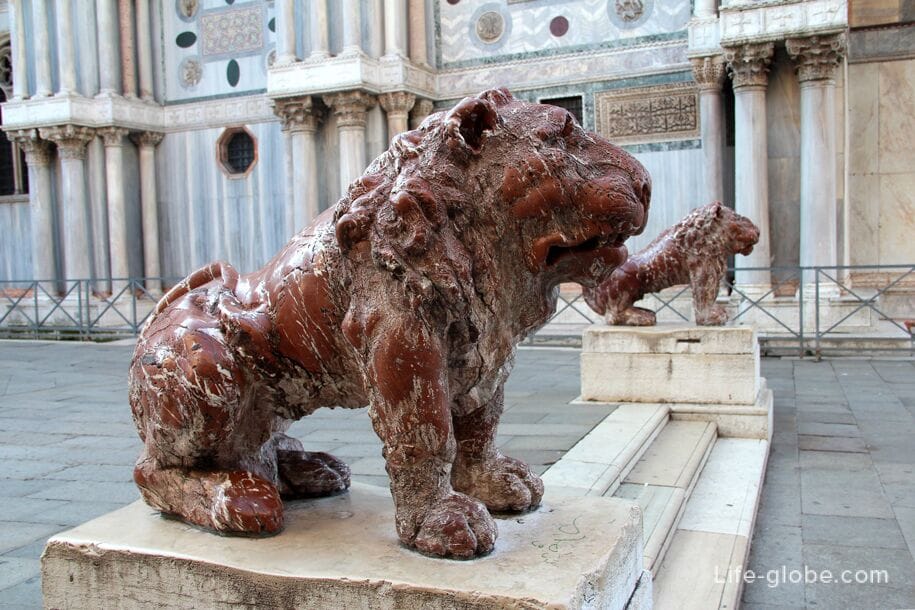
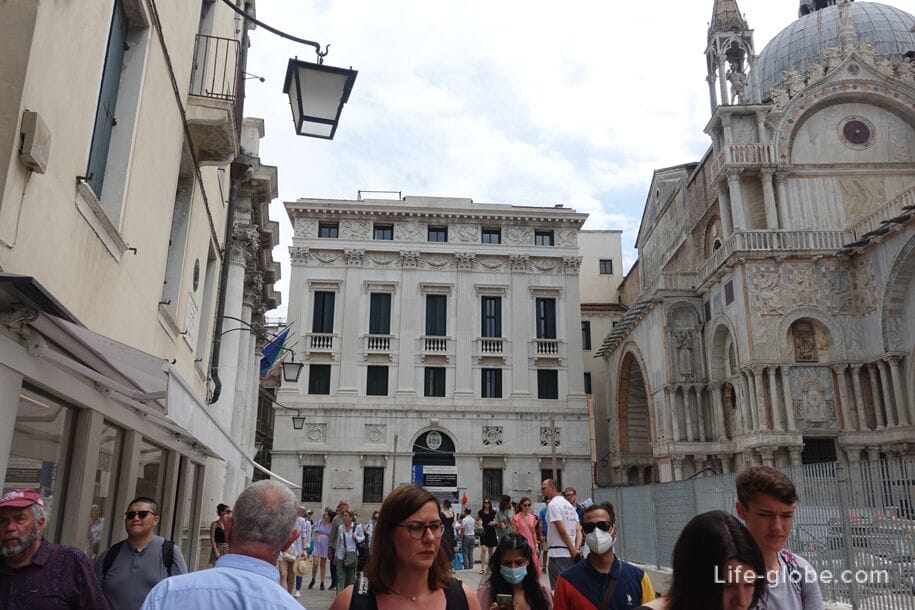
Wings of the former Prosecutor's Office: museums, shops and cafes
All three sides of the square (northern, western and southern perimeters) form large wings of the arcades of the former Prosecutor's Office, interconnected and architecturally forming the letter "P". The Procurator of Saint Mark (Procuratore di San Marco) was one of the few lifetime appointments in the government of the Republic of Venice and was considered second only to the doge in prestige.
The so-called Old Procuracy (Procuratie Vecchie) was built at the beginning of the sixteenth century, and this wing occupies the northern side of St. Mark's Square. Between the end of the sixteenth and the middle of the seventeenth centuries, the building of the New Procuracy (Procuratie Nuove) was built, which occupies the entire southern part of the square. Initially, these were the former houses and offices of the procurators of St. Mark.
The central (western) wing of the Procuracy, called the "Newest Procurations" (Procuratie Nuovissime), also known as the Napoleonic Wing, was built in 1810 by order of Napoleon to connect both Procurations. This is how Ala Napoleonica (Napoleon's wing) appeared.
All these buildings are built in the same architectural style and perfectly complement each other, which gives them an unsurpassed monumental architectural ensemble.
Today, cafes, restaurants, shops and offices are located in the former wings of the prosecutor's offices. From historical cafes: Caffe Quadri, founded in 1775, and Caffe Florian, opened on December 29, 1720 and is one of the oldest cafes in the world.
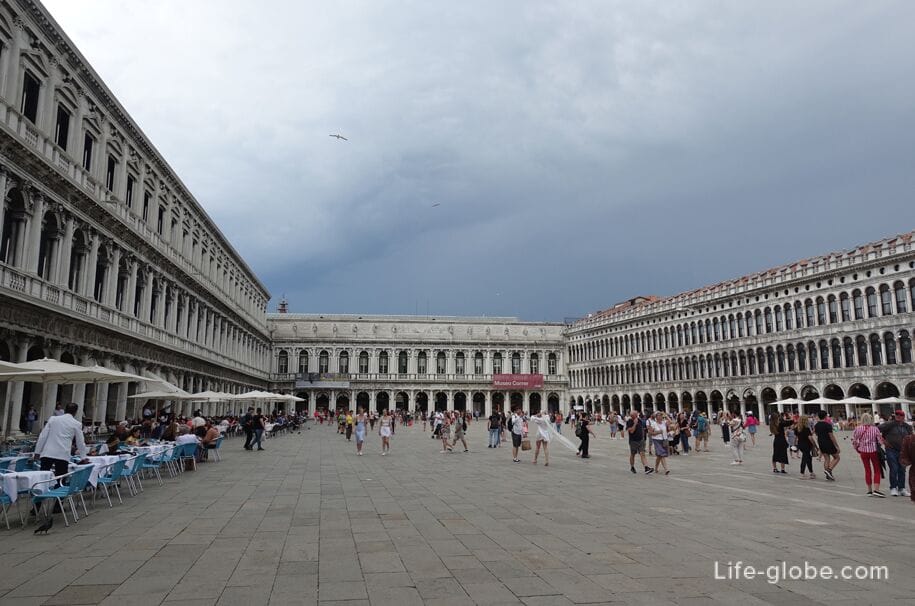

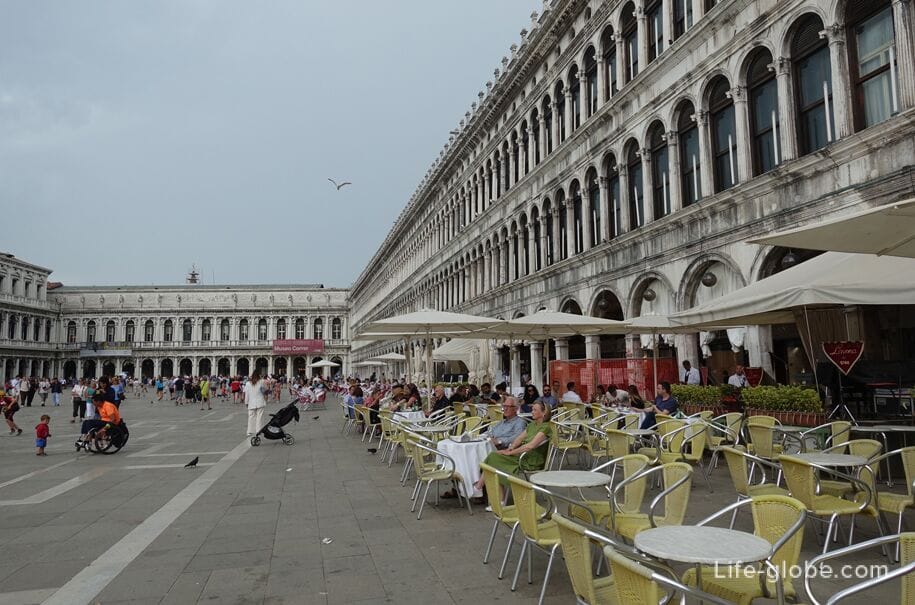

In most of the New Prosecutor's Office and the Napoleonic Wing there is the Museo Correr, in which you can visit beautiful halls, while seeing frescoes, stucco decorations, old furniture, sculptures, paintings, as well as a "collection of wonders" that evokes the charm of the possible Wunderkammer Lagoon. The museum's website: correr.visitmuve.it .
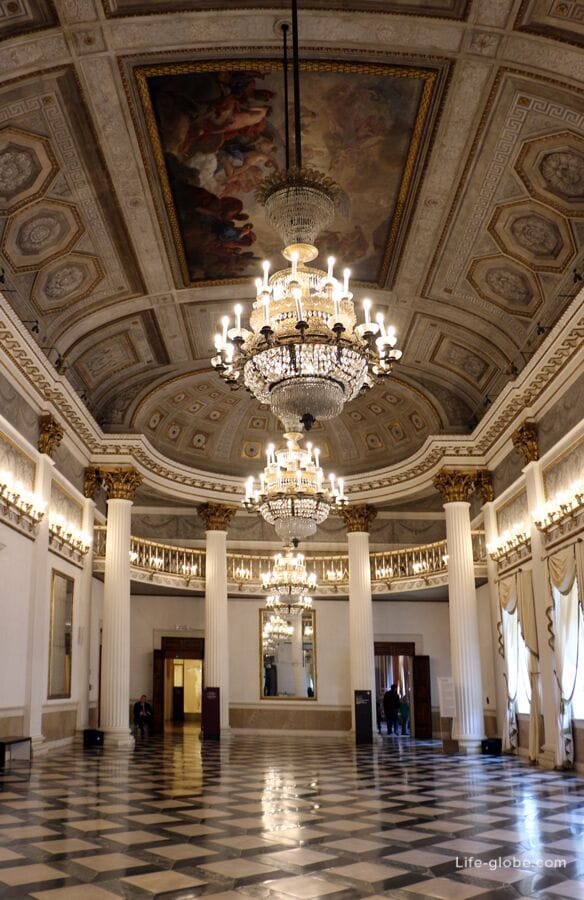
Also in the premises of the Prosecutor's Office is the National Archaeological Museum of Venice (Museo Archeologico Nazionale), which stores and exhibits precious Greek and Roman sculptures, bronze, ceramics, precious stones and coins, inscriptions of Venice and the Republic, along with Egyptian and Assyrian-Babylonian antiquities. The museum's website: archeologicovenezia.cultura.gov.it .
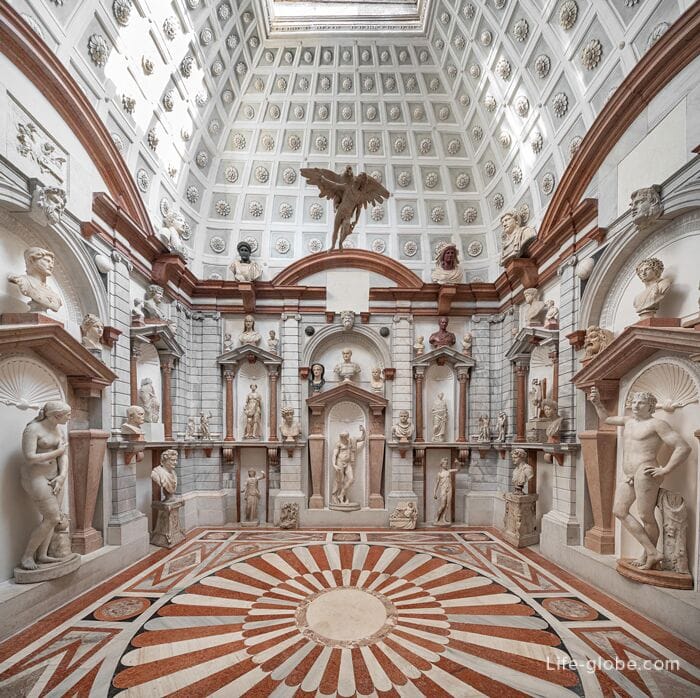
Museum ticket offices and a tourist information center are also located in the Napoleonic wing.
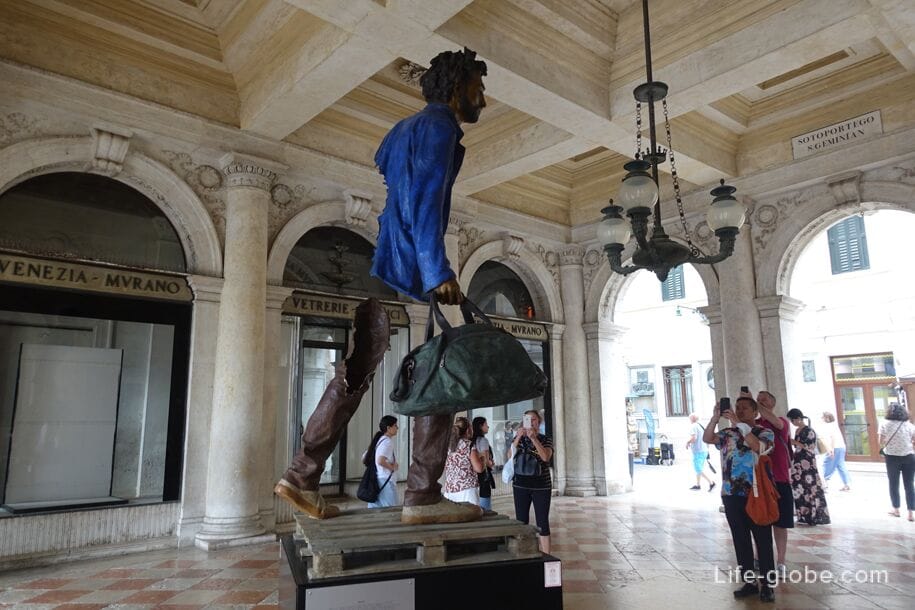
Marcian Library
The Biblioteca Marciana or St. Mark's Library / San Marco Library, also known as the Biblioteca Sansovino / Sansovino Library (Biblioteca Nazionale Marciana, Libreria pubblica di san Marco, Libreria sansoviniana) is the national public and most important library of Venice, which is one of the largest Italian libraries.
The name of the library "San Marco" was given in honor of St. Mark the Evangelist, the patron saint of Venice, and "Sansovinskaya" - in honor of its architect, Jacopo Sansovino.
Today the library has several buildings and reading rooms, including the nearby Mint of the Republic of Venice (Zecca di Venezia), designed by Jacopo Sansovino in 1537-1547.
In the historic building, which looks like loggias with various decorations and sculptures and was started by the Italian architect and sculptor Jacopo Sansovino in 1537, for tourist purposes, you can visit the museum area - the Monumental Halls of the library: the honorary staircase, the lobby, converted into a sculptural part, and the former library hall. Temporary exhibitions and events are held in the museum area of the library. Entrance is paid.
Marcian Library website: bibliotecanazionalemarciana.cultura.gov.it. Learn more about the Marcian Library and the Monumental Museum Halls...

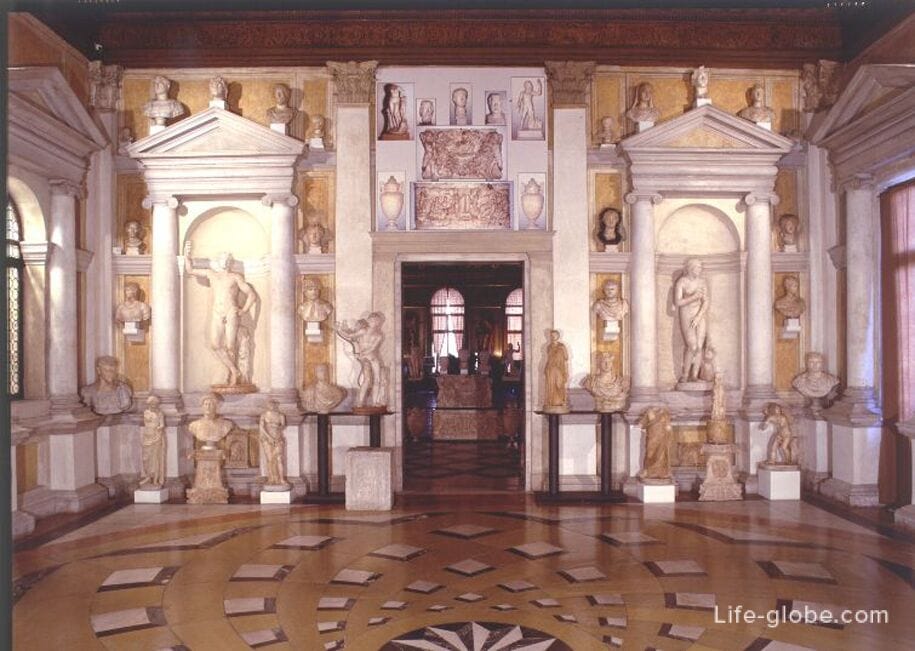
Doge 's Palace
The Doge's Palace or Ducal Palace (Palazzo Ducale, Palazzo Ducale, Venetian name: Pałaso Dogal) is the former residence of the Doge (the oldest and highest magistracy of the Republic of Venice), which is a masterpiece of Gothic art, which now houses a museum.
The palace was built between 1309 and 1424, presumably by the architect Filippo Calendario. Subsequently, the palace was expanded; so, in the 17th century, a New prison (Prigoni Nuove) and the Bridge of Sighs (Ponte dei Sospiri) were built, which connected the prison with the Doge's palace.
In the Doge's Palace, you can visit the wings of the palace with galleries, halls, representative rooms and apartments of the Doge, as well as the prison, armory and secret routes.
In the premises of the palace there are collections of antiquities, as well as temporary exhibitions.
Entrance to the Doge's Palace is paid. There are discounted tickets. Children under 6 years old - free of charge. For a fee, you can take an audio guide. More about the Doge's Palace...
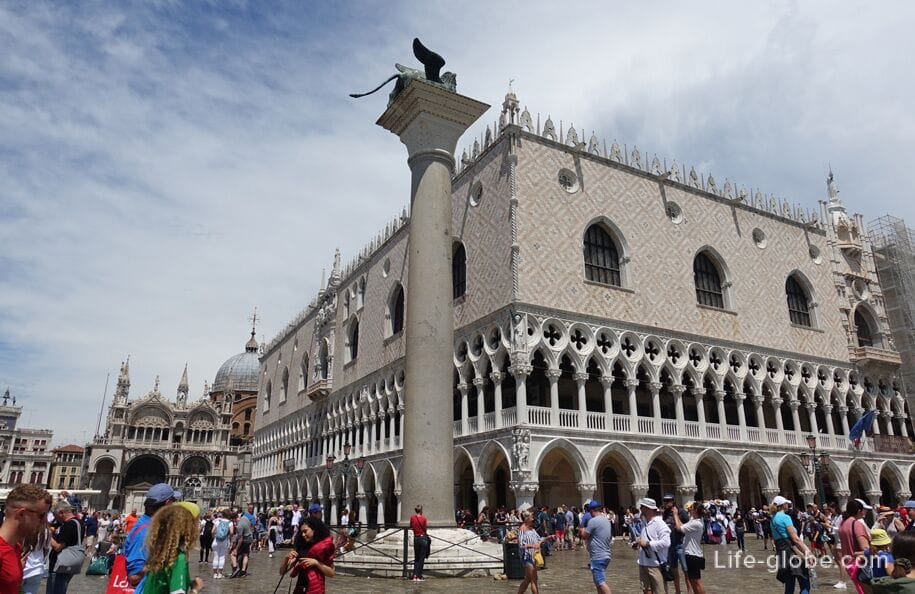
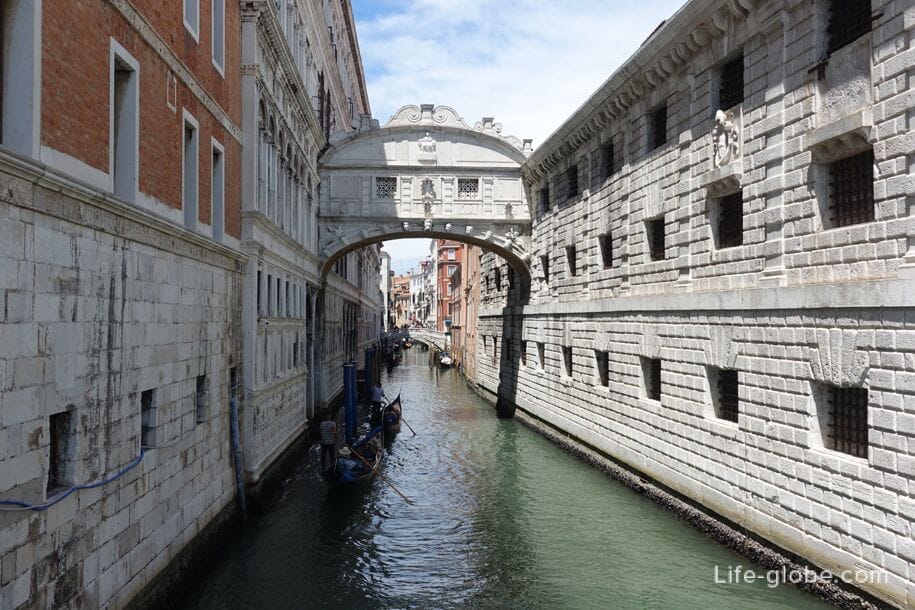
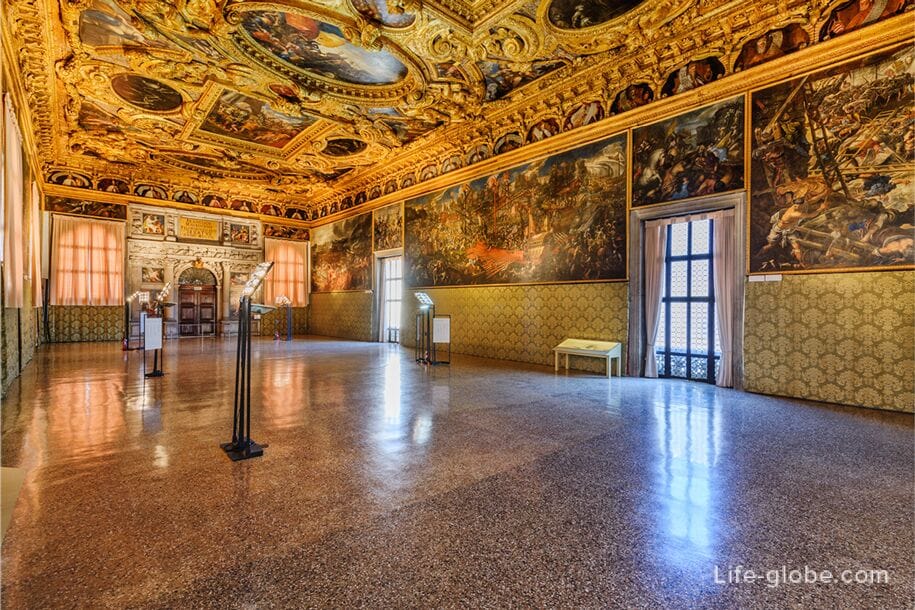

P.S.
A ticket to visit the Doge's Palace is included in a comprehensive ticket to visit other museums (described above in this article) on San Marco Square: the Museo Correr, the National Archaeological Museum (Museo Archeologico Nazionale) and the monumental halls of the National Library of Marciana (Biblioteca Nazionale Marciana). The ticket is valid for 3 months and allows one entrance to the Doge's Palace and one entrance to the integrated route of the other three objects.
Visits to the Secret Routes of the Doge's Palace are paid, and are not included in the general tickets for the palace. Visiting these routes is possible when booking and with guides.
There are complex tickets for 6 months, with visits to the Doge's Palace, three other museums in St. Mark's Square and other public museums in Venice.
Tickets can be purchased at the box office or online in advance on the website.
Up-to-date information about the Doge's Palace, including possible halls and premises of the palace, secret routes, cost, validity period and places of purchase of tickets, conditions of visits, opening hours of the museum, etc., we recommend checking on the official website of the Doge's Palace Museum: palazzoducale.visitmuve.it.
Columns of San Marco and San Todaro
The columns of San Marco or St. Mark and San Todaro or St. Theodore (colonne di San Marco e San Todaro), also known as the columns of San Marco Square (colonne di piazza San Marco), mark the Piazzetta of San Marco and form the main entrance to the square from the harbor of San Marco, which the pier comes out.
The columns face the harbor.
The columns were brought by sea from the East to Venice in 1125 as war trophies, after the victory over Tsar Tyre, and after a while they were installed on the site at the Slavyanskaya embankment (Riva degli Schiavoni). Initially, there were supposed to be three columns, but the third was lost along with the sunken ship that was carrying it.
However, later interpretations date the construction of the columns to the second half of the 13th century. Marble of two columns (Egyptian red marble for the San Todaro column and Troaden marble for the San Marco column) was widely used for the construction of columns in late antiquity, which makes it almost certain that they came from Constantinople (now the city of Istanbul, Turkey). Therefore, it is very likely that the appearance of the columns in Venice, as well as most of the Byzantine remains located in the lagoon, should be traced back to the period of the Latin Empire in Constantinople, between 1204 and 1261.
Between the columns in the Middle Ages executed people sentenced to death in the offices of the Doge's Palace.
At the top of the column, which stands at the Doge's Palace, there is a winged lion, the symbol of San Marco, the patron saint and symbol of the city and the Venetian state since 862. On the side of the library on the column is placed Saint Theodore, a Byzantine saint and warrior, the first defender of the city, depicted in marble during the victory over the dragon.
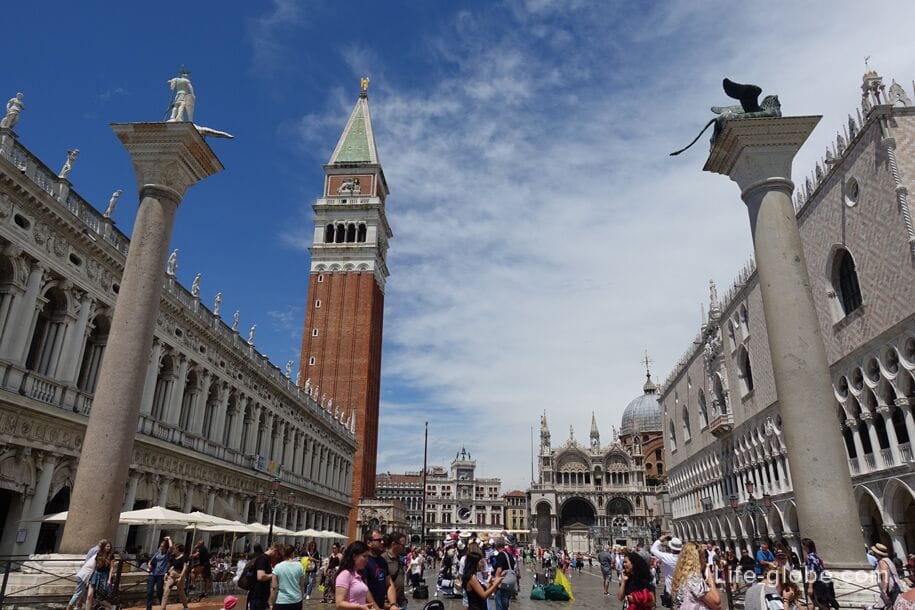

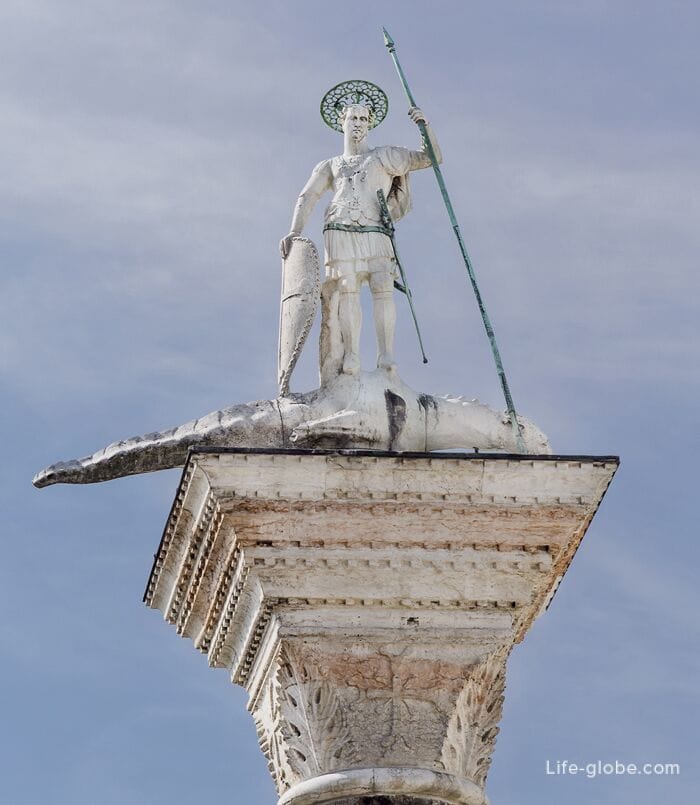
Scheme of San Marco Square
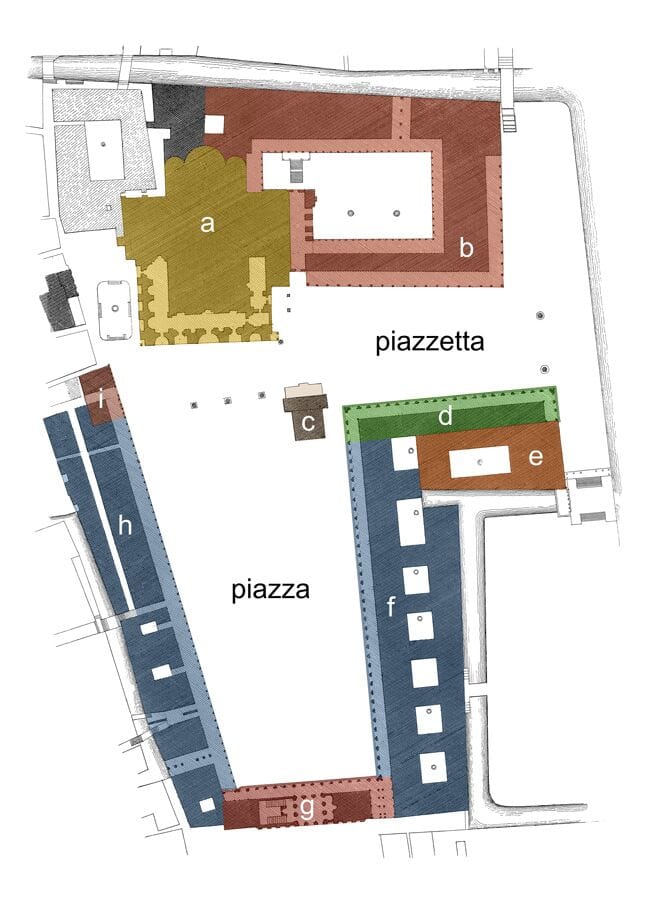
a. St. Mark's Basilica
b. Doge's Palace
c. Cathedral campanile with loggia and observation deck (Bell tower and Loggetta)
d. Marciana Library
e. Former Mint, now part of the Marcian Library (Mint)
f. Wing of the New Procuracy (Procuratie Nuove)
g. Napoleonic wing (Napoleonic wing)
h. Wing of the Old Procuracy (Procuratie Vecchie)
i. Clock tower
Where to stay near San Marco Square
The 5-star Baglioni Hotel Luna is The Leading Hotels of the World, the interior of which is decorated with historical frescoes.
In a hotel: private jetty, which can be reached by boat or gondola, terrace with panoramic views, restaurant, bar, free Wi-Fi throughout and family rooms.
In the rooms: antique furniture, Murano glass chandeliers, marble bathroom with hairdryer, air conditioning, TV and mini-bar. Some suites offer views of the lagoon.
Breakfast is included in the room rate. Link to the hotel
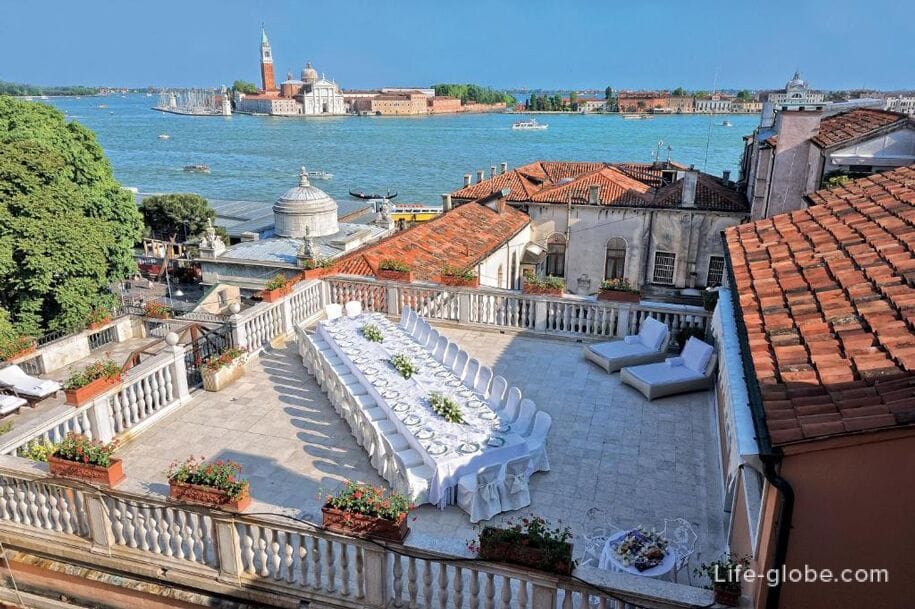
4-star Canaletto Luxury Suites - San Marco Luxury with spa and wellness center with sauna and hot tub, concierge service, elevator, heating, laundry and luggage storage.
The rooms are equipped with air conditioning, a work desk, a kettle, a minibar, a coffee machine, a safe, a flat-screen TV, a wardrobe and a private bathroom with a bidet.
Some rooms offer views of St. Mark's Square.
Breakfast is included in the room rate. Link to the hotel
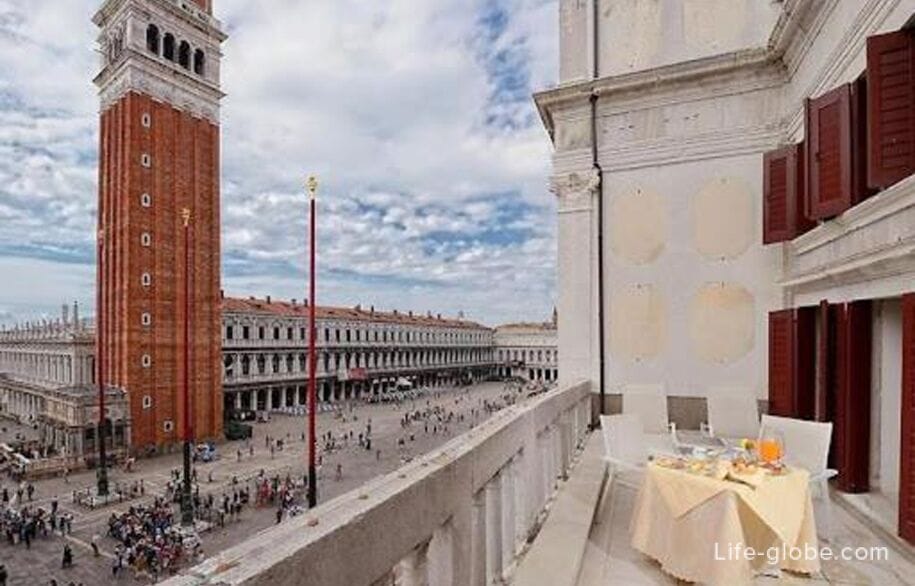
Apartment Due Leoni Terrace In St. Mark's Square features a terrace with a view of St. Mark's Square, 4 bedrooms, a flat-screen TV with satellite channels, a fully equipped kitchen with a dishwasher and a refrigerator, a washing machine and 3 bathrooms with a bidet.
It offers free Wi-Fi and air conditioning. Link to the apartment
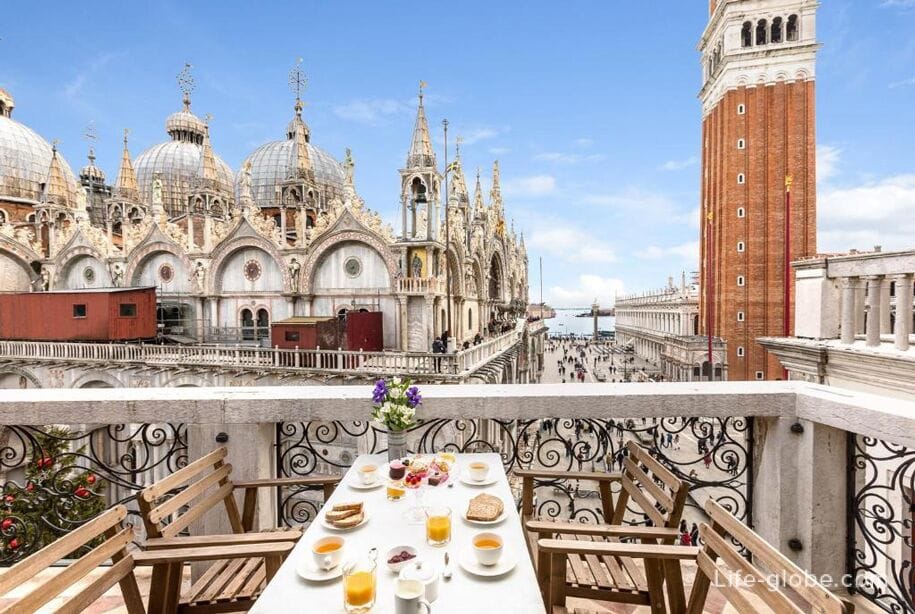
All accommodation facilities in Venice, including those near Piazza San Marco, in the historical center of the city and more remotely from such, can view and book here






